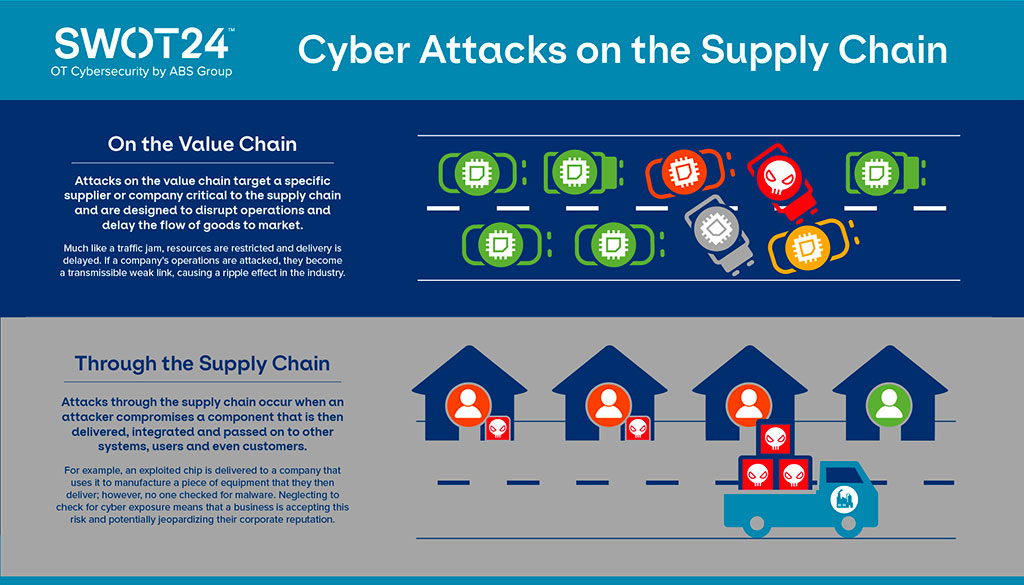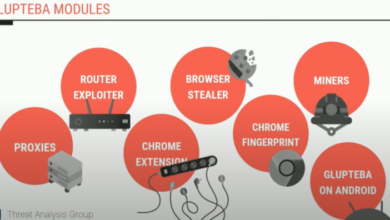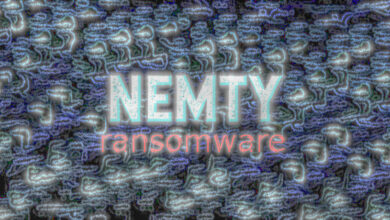
The Underestimated Cyber Threat Anticipating & Combating Supply Chain Attacks
The underestimated cyber threat anticipating and combatting supply chain attacks – The Underestimated Cyber Threat: Anticipating & Combating Supply Chain Attacks – it sounds scary, right? And it should. We’re not just talking about some random hacker; we’re talking about sophisticated attacks targeting the very backbone of global commerce. Imagine a ripple effect, starting with a compromised supplier and ending with your entire business crippled. This isn’t a hypothetical scenario; it’s a growing reality, and understanding the vulnerabilities, threats, and mitigation strategies is crucial for survival in today’s digital landscape.
Supply chain attacks are stealthy, often going undetected for months, even years. They can range from malicious code injected into software updates to insider threats and physical breaches. The motivations behind these attacks are diverse, from financially driven cybercriminals seeking profit to state-sponsored actors aiming for espionage or sabotage. This post will dive deep into the different types of attacks, their impact, and – most importantly – how we can proactively protect ourselves and our businesses.
The Nature of Supply Chain Attacks
Supply chain attacks represent a significant and evolving threat to organizations of all sizes. Unlike direct attacks targeting a specific company, these attacks exploit vulnerabilities within an organization’s supply chain – the network of vendors, suppliers, and partners that contribute to its operations. Understanding the nature of these attacks is crucial for effective prevention and mitigation.
Types of Supply Chain Attacks
Supply chain attacks manifest in various forms, each leveraging different weaknesses within the ecosystem. One common type is the compromised software attack, where malicious code is introduced into legitimate software, firmware, or hardware components. The infamous SolarWinds attack is a prime example, where attackers infiltrated the software update process, compromising thousands of organizations. Another type is data breach via a third-party vendor, where an attacker gains access to sensitive information through a less secure supplier.
For instance, a breach in a cloud storage provider could expose the data of numerous clients. Finally, physical attacks, such as tampering with hardware during manufacturing or distribution, also represent a significant threat, potentially leading to hardware-based attacks.
Motivations Behind Supply Chain Attacks
The motivations behind supply chain attacks vary considerably. State-sponsored actors often aim for espionage, intellectual property theft, or disruption of critical infrastructure. These attacks are often characterized by their sophistication and long-term strategic goals. Financially motivated actors, such as cybercriminals, primarily seek monetary gain. They might target supply chain components to deploy ransomware, steal financial data, or conduct cryptocurrency mining operations.
The NotPetya ransomware attack, though initially suspected to be state-sponsored, ultimately caused widespread financial damage to numerous organizations.
Common Vulnerabilities Exploited in Supply Chain Attacks
Supply chain attacks frequently exploit software vulnerabilities and human error. Software vulnerabilities, such as unpatched software or insecure coding practices, provide entry points for attackers. Many attacks leverage zero-day exploits, vulnerabilities unknown to the vendor and thus unpatched. Human error, such as weak passwords, phishing attacks, or inadequate security awareness training, often creates opportunities for attackers to gain a foothold within the supply chain.
The widespread use of compromised credentials in various breaches highlights the significant impact of human error.
Comparison of Attack Vectors
| Attack Vector | Description | Impact | Mitigation Strategies |
|---|---|---|---|
| Malicious Code Injection | Insertion of malicious code into software updates, firmware, or hardware components. | Data breaches, system compromise, ransomware deployment, espionage. | Robust software development practices, rigorous code review, vulnerability scanning, software signing and verification. |
| Compromised Credentials | Unauthorized access gained through stolen or weak passwords, phishing, or other credential theft methods. | Data breaches, account takeover, lateral movement within the network. | Strong password policies, multi-factor authentication (MFA), security awareness training, regular password changes. |
| Physical Access | Unauthorized physical access to hardware or facilities, enabling tampering or data theft. | Hardware manipulation, data theft, supply chain disruption. | Secure facilities, access control systems, physical security measures, regular audits and inspections. |
| Third-Party Vendor Compromise | Attack targeting a vendor or supplier, providing access to the organization’s systems or data. | Data breaches, system compromise, supply chain disruption. | Thorough vendor risk assessment, security audits of third-party vendors, contractually mandated security controls. |
Identifying Vulnerable Points in Supply Chains
Supply chain attacks are becoming increasingly sophisticated, exploiting weaknesses throughout the entire procurement process. Understanding where these vulnerabilities lie is crucial for building robust defenses. This requires a multifaceted approach encompassing risk assessment, regular auditing, and the implementation of strong security practices across all tiers of the supply chain.Identifying the weak points requires a thorough understanding of the supply chain’s various stages.
A typical supply chain involves numerous interconnected entities, each presenting potential attack surfaces.
Key Stages of Supply Chain Vulnerability
The most vulnerable points in a typical supply chain often involve raw material sourcing, manufacturing, logistics, distribution, and the end-user. Attacks can occur at any stage, compromising data, disrupting operations, or introducing malicious code. For example, compromised software in manufacturing equipment could lead to faulty products or data breaches. Similarly, a compromised logistics provider could lead to theft or diversion of goods.
Understanding the specific risks associated with each stage is critical.
Supply Chain Risk Assessment Methodology
A comprehensive risk assessment involves identifying critical dependencies and potential weaknesses. This process begins with mapping the entire supply chain, including all suppliers, manufacturers, distributors, and other third-party vendors. Next, we need to assess the risk associated with each entity, considering factors such as their security posture, geographic location, and the criticality of their role in the supply chain.
A scoring system, perhaps assigning risk levels (low, medium, high) based on the likelihood and impact of a potential attack, would be beneficial. The assessment should also identify single points of failure, where a compromise in one area could severely impact the entire chain. For instance, reliance on a single supplier for a critical component represents a significant risk.
Auditing and Monitoring Supplier Security Practices
Regular audits of supplier security practices are essential for maintaining a secure supply chain. This involves reviewing their security policies, procedures, and technologies. Audits should assess compliance with relevant industry standards and regulations, such as ISO 27001. Continuous monitoring, using tools like Security Information and Event Management (SIEM) systems, provides real-time visibility into supplier activity and can help detect anomalies or suspicious behavior.
For example, a sudden increase in network traffic from a supplier might indicate a compromise. Regular vulnerability scans and penetration testing of supplier systems can proactively identify and address weaknesses.
Securing Third-Party Software and Hardware Components
Third-party software and hardware components represent a significant risk, particularly given the prevalence of open-source software and the complexity of modern supply chains. Implementing robust security measures for these components is crucial. This includes verifying the authenticity and integrity of software and hardware, performing thorough security assessments before deployment, and regularly updating components to address known vulnerabilities. Using trusted sources for components and employing strong access controls are vital.
The use of Software Bill of Materials (SBOMs) can help track components and identify potential vulnerabilities throughout the software lifecycle. Consider the SolarWinds attack; it highlighted the vulnerability of relying on untrusted third-party software components.
Proactive Security Measures: The Underestimated Cyber Threat Anticipating And Combatting Supply Chain Attacks

Protecting your supply chain from cyberattacks requires a proactive, multi-layered approach. Ignoring vulnerabilities leaves your organization exposed to significant financial and reputational damage. A robust security strategy should focus on preventing attacks before they happen, rather than simply reacting to them. This involves implementing strong access controls, keeping software updated, leveraging threat intelligence, and utilizing advanced security tools.
Robust Access Control and Authentication Mechanisms
Implementing robust access control and authentication is paramount to securing the supply chain. This involves limiting access to sensitive data and systems based on the principle of least privilege, meaning each user only has access to the information and resources necessary to perform their job. Multi-factor authentication (MFA), which requires multiple forms of verification (like a password and a code from a mobile app), should be mandatory for all users, especially those with elevated privileges.
Regular audits of user access rights are crucial to ensure that permissions remain appropriate and that no unauthorized access exists. This includes promptly revoking access for employees who leave the company. Furthermore, strong password policies, including complexity requirements and regular password changes, should be enforced.
Regular Software Updates and Patching
Regular software updates and patching are critical to mitigating vulnerabilities. Outdated software is a prime target for attackers, as known security flaws often remain unpatched. A comprehensive patching strategy should include all systems involved in the supply chain, from servers and workstations to embedded devices and IoT sensors. This requires a robust system for identifying and prioritizing updates, a schedule for deploying patches, and a process for testing patches in a controlled environment before rolling them out to production systems.
Automated patching systems can significantly improve efficiency and reduce the risk of human error. Failure to promptly address vulnerabilities can lead to significant breaches, as seen in the widespread exploitation of the Log4j vulnerability in 2021.
Leveraging Threat Intelligence
Threat intelligence plays a crucial role in anticipating and mitigating potential attacks. By actively monitoring threat feeds, security teams can gain insights into emerging threats, vulnerabilities, and attacker tactics. This allows them to proactively address potential weaknesses in their supply chain before they are exploited. Threat intelligence can inform decisions about patching, access control, and security architecture. For instance, knowing that a specific type of malware is targeting a particular type of software used in the supply chain allows for the prioritization of patching that software and implementing additional security measures.
Utilizing threat intelligence platforms and collaborating with industry partners to share information about threats can significantly improve overall security posture.
Security Tools and Technologies
Several security tools and technologies can significantly enhance supply chain security. A well-integrated suite of these tools provides a comprehensive defense against various types of attacks.
- Intrusion Detection Systems (IDS) and Intrusion Prevention Systems (IPS): These systems monitor network traffic for malicious activity and can block or alert on suspicious behavior.
- Security Information and Event Management (SIEM) systems: SIEM systems collect and analyze security logs from various sources, providing a centralized view of security events and enabling faster incident response.
- Vulnerability scanners: These tools automatically scan systems and applications for known vulnerabilities, allowing for proactive patching and remediation.
- Data Loss Prevention (DLP) tools: DLP tools monitor data movement to prevent sensitive information from leaving the organization’s control.
- Endpoint Detection and Response (EDR) solutions: EDR solutions monitor endpoint devices for malicious activity, providing detailed insights into attacks and enabling faster response times.
- Software Composition Analysis (SCA) tools: SCA tools analyze the components of software applications to identify vulnerabilities and open-source licenses.
Reactive Measures and Incident Response
Responding to a supply chain attack requires swift and decisive action. The speed and effectiveness of your response directly impacts the extent of damage and the time it takes to recover. A well-defined incident response plan is crucial, encompassing containment, eradication, recovery, and post-incident analysis.
The initial phase focuses on containment, aiming to limit the spread of the attack and prevent further damage. This involves isolating affected systems, disabling compromised accounts, and blocking malicious traffic. Eradication follows, where the attacker’s presence is completely removed from the system. This might include reinstalling software, wiping hard drives, or replacing affected hardware. A thorough recovery process then restores systems and data to a functional state, often involving restoring backups and validating system integrity.
This is followed by a critical post-incident analysis.
Containment and Eradication Procedures
Effective containment requires a layered approach. First, identify the compromised systems. This might involve monitoring network traffic for unusual activity, analyzing security logs for suspicious events, or using intrusion detection systems. Once identified, isolate these systems from the rest of the network to prevent further lateral movement. This often means disconnecting the affected systems from the internet and internal network segments.
Next, disable compromised accounts and revoke any compromised credentials. Finally, block malicious traffic originating from or destined for the compromised systems using firewalls or other network security devices. Eradication involves a complete removal of the malware or attacker’s presence. This may necessitate a full system wipe and reinstall, followed by rigorous security checks.
Post-Incident Analysis
A thorough post-incident analysis is critical for understanding the root cause of the attack, identifying vulnerabilities, and preventing future incidents. This process typically involves a detailed review of security logs, network traffic data, and system configurations. The goal is to reconstruct the timeline of the attack, identify the attacker’s techniques, and pinpoint the vulnerabilities that were exploited. This analysis should also evaluate the effectiveness of existing security measures and identify gaps in the security posture.
For example, a post-incident analysis might reveal a weakness in a third-party software component, leading to changes in vendor selection and patching processes. The analysis findings should be documented and used to improve security practices.
Communication Plan for Stakeholders
A well-defined communication plan is essential for managing the impact of a supply chain attack. This plan should Artikel the key messages to be communicated, the target audience (e.g., customers, partners, investors, regulatory bodies), and the communication channels to be used (e.g., press releases, email, website updates). Transparency and timely communication are crucial to maintain trust and manage reputational damage.
The plan should also address potential legal and regulatory requirements for disclosure. For example, a company might need to notify customers of a data breach under GDPR regulations. Regular updates should be provided to stakeholders throughout the incident response process.
Collaboration with Law Enforcement and Authorities
In the event of a significant supply chain attack, collaboration with law enforcement and other relevant authorities is often necessary. This collaboration may involve providing information about the attack, assisting with investigations, and sharing intelligence to help prevent similar attacks in the future. This requires establishing clear communication channels and adhering to legal and regulatory requirements regarding data sharing and evidence preservation.
For example, a company might need to work with the FBI or other national cyber security agencies to investigate a sophisticated attack involving a foreign state actor. Early engagement with law enforcement can streamline the investigation and improve the chances of successful prosecution.
The Human Element in Supply Chain Security
The weakest link in any security system, regardless of its technological sophistication, is often the human element. Supply chain security is no exception. While robust technological safeguards are crucial, a comprehensive strategy must prioritize employee training, awareness, and adherence to established security policies and procedures. Neglecting the human factor significantly increases vulnerability to sophisticated attacks.Employee training and awareness are paramount in preventing supply chain attacks.
Well-trained employees are less likely to fall victim to phishing scams, social engineering tactics, or inadvertently introduce malware into the system. Furthermore, a culture of security awareness fosters proactive identification of potential threats.
Effective Security Awareness Training Programs
Effective security awareness training for supply chain personnel should be tailored to their specific roles and responsibilities. It’s not a one-size-fits-all approach. For example, procurement staff require training on identifying fraudulent invoices and verifying supplier legitimacy, while IT personnel need in-depth knowledge of cybersecurity threats and incident response procedures. A successful program incorporates various learning methods, including interactive modules, realistic simulations (like phishing email exercises), and regular refresher courses.
The training should emphasize practical skills, such as recognizing suspicious emails, strong password creation, and safe browsing habits. Regular quizzes and assessments help reinforce learning and track employee understanding. Furthermore, gamification techniques can make the training more engaging and memorable, leading to better retention of crucial security information. For instance, a points-based system rewarding successful completion of modules and participation in simulations can significantly improve engagement.
Security Policies and Procedures
Establishing clear, comprehensive, and consistently enforced security policies and procedures is critical. These policies should cover all aspects of supply chain security, from vendor risk management and data protection to incident response and communication protocols. All members of the supply chain, including employees, suppliers, and third-party vendors, must understand and adhere to these policies. Regular audits and reviews ensure the policies remain relevant and effective in the face of evolving threats.
Moreover, these policies should be easily accessible and written in plain language to avoid ambiguity and ensure understanding across different levels of technical expertise within the supply chain. A robust policy framework should also Artikel clear consequences for non-compliance, thereby promoting accountability and reinforcing the importance of security measures. The policies should also include mechanisms for reporting security incidents and addressing violations.
Reporting a Suspected Supply Chain Security Incident
A well-defined incident response plan is crucial for mitigating the impact of a security breach. This plan should Artikel clear steps for identifying, reporting, investigating, and remediating security incidents. The process should be straightforward and easily accessible to all personnel. This is a simplified representation of a flowchart. A more detailed flowchart would include specific contact information, escalation procedures, and more granular steps for different types of incidents.
The image depicts a series of connected boxes, each representing a step in the process. The boxes are connected by arrows indicating the flow of the process. The first box would be “Incident Detected,” leading to “Report to Security Team.” The next box would be “Security Team Assessment,” followed by “Investigation,” then “Remediation,” and finally, “Post-Incident Review.” The flowchart visually guides personnel through the reporting and response process, ensuring consistent and efficient handling of security incidents.
Future Trends and Challenges
The landscape of supply chain security is constantly evolving, driven by technological advancements, globalization, and the increasing sophistication of cyberattacks. Understanding and adapting to these future trends is crucial for organizations aiming to protect their supply chains from increasingly complex threats. This section explores emerging technologies, persistent challenges, and successful security initiatives shaping the future of supply chain resilience.The increasing complexity and interconnectedness of global supply chains present significant security challenges.
Traditional security measures often struggle to keep pace with the rapid expansion of digital interactions, the proliferation of IoT devices, and the rise of cloud-based services. Furthermore, the human element remains a significant vulnerability, requiring a multi-faceted approach to address both technical and human factors.
Emerging Technologies Enhancing Supply Chain Security
Blockchain technology offers a promising solution for enhancing transparency and traceability within supply chains. By creating a shared, immutable ledger of transactions, blockchain can improve visibility into the movement of goods and materials, making it more difficult for malicious actors to tamper with products or introduce counterfeit items. For example, a pharmaceutical company could use blockchain to track the entire journey of a drug from manufacturing to distribution, ensuring its authenticity and preventing the introduction of counterfeit medications.
Similarly, AI-powered systems can analyze vast amounts of data to identify anomalies and potential threats in real-time, providing early warnings of potential disruptions or attacks. These AI systems can learn and adapt to new attack patterns, improving their effectiveness over time.
Challenges in Securing Complex and Globalized Supply Chains
Securing increasingly complex and globalized supply chains presents several significant hurdles. The sheer scale and geographical dispersion of these networks make it difficult to implement and maintain consistent security protocols across all tiers of the supply chain. Different jurisdictions may have varying data protection laws and regulations, adding further complexity to security management. Moreover, the reliance on numerous third-party vendors and suppliers introduces significant risks, as vulnerabilities in any part of the chain can compromise the entire system.
The lack of standardized security protocols and the difficulty in establishing trust and collaboration across different organizations further exacerbate these challenges. Effective risk management requires a holistic approach, encompassing all aspects of the supply chain, from raw materials sourcing to final product delivery.
Supply chain attacks are a seriously underestimated threat, often sneaking in through seemingly innocuous vulnerabilities. Building secure applications is crucial, and that’s where exploring options like domino app dev, the low-code and pro-code future , becomes vital. Understanding these development approaches can help us build more resilient systems, better equipped to anticipate and combat these increasingly sophisticated attacks.
Ultimately, a layered security approach, starting with robust app development, is our best defense.
Adapting Security Measures for Cloud-Based Services
The increasing adoption of cloud-based services in supply chains necessitates a shift in security strategies. Organizations must adopt a cloud-native security approach, leveraging cloud-specific security tools and services to protect their data and applications. This includes implementing robust access controls, data encryption, and regular security audits. Furthermore, organizations need to establish clear responsibilities and accountability for security across different cloud service providers and internal teams.
A crucial aspect is ensuring compliance with relevant data privacy regulations, such as GDPR and CCPA, which apply to data stored and processed in the cloud. Adopting a zero-trust security model, which assumes no implicit trust, is also crucial for mitigating risks associated with cloud-based services.
Examples of Successful Supply Chain Security Initiatives, The underestimated cyber threat anticipating and combatting supply chain attacks
Several organizations have implemented successful supply chain security initiatives, demonstrating the effectiveness of proactive and reactive measures.
- Improved Vendor Risk Management: Implementing rigorous due diligence processes to assess the security posture of vendors and suppliers, including security audits and vulnerability assessments.
- Enhanced Data Security: Implementing strong encryption protocols, access controls, and data loss prevention (DLP) measures to protect sensitive data throughout the supply chain.
- Real-time Threat Monitoring: Deploying security information and event management (SIEM) systems to monitor for suspicious activities and potential threats in real-time.
- Incident Response Planning: Developing and regularly testing incident response plans to effectively manage and mitigate the impact of security breaches.
- Employee Training and Awareness: Conducting regular security awareness training for employees to educate them about potential threats and best practices for protecting sensitive information.
Outcome Summary

Securing your supply chain isn’t a one-time fix; it’s an ongoing process that requires vigilance, collaboration, and a commitment to robust security practices. From implementing strong access controls and regularly patching software to leveraging threat intelligence and fostering a culture of security awareness among your employees and suppliers, every step counts. While the threat landscape is constantly evolving, proactive measures, coupled with a well-defined incident response plan, significantly reduce your vulnerability.
Remember, the cost of inaction far outweighs the investment in robust supply chain security.
FAQ Explained
What is the biggest misconception about supply chain attacks?
Many believe supply chain attacks only target large corporations. The reality is that businesses of all sizes are vulnerable, making proactive security crucial for everyone.
How can small businesses protect themselves against supply chain attacks?
Small businesses should focus on strong vendor due diligence, regular software updates, employee training, and multi-factor authentication. They should also consider affordable security solutions like cloud-based security information and event management (SIEM) systems.
What’s the role of insurance in mitigating supply chain attack risks?
Cyber insurance can help cover the financial losses associated with a supply chain attack, including data breaches, system downtime, and legal fees. However, it’s crucial to remember that insurance is not a replacement for robust security measures.
How often should supply chain security be audited?
Regular audits, ideally at least annually, are crucial to identify and address emerging vulnerabilities. The frequency should be adjusted based on risk assessment and industry best practices.





